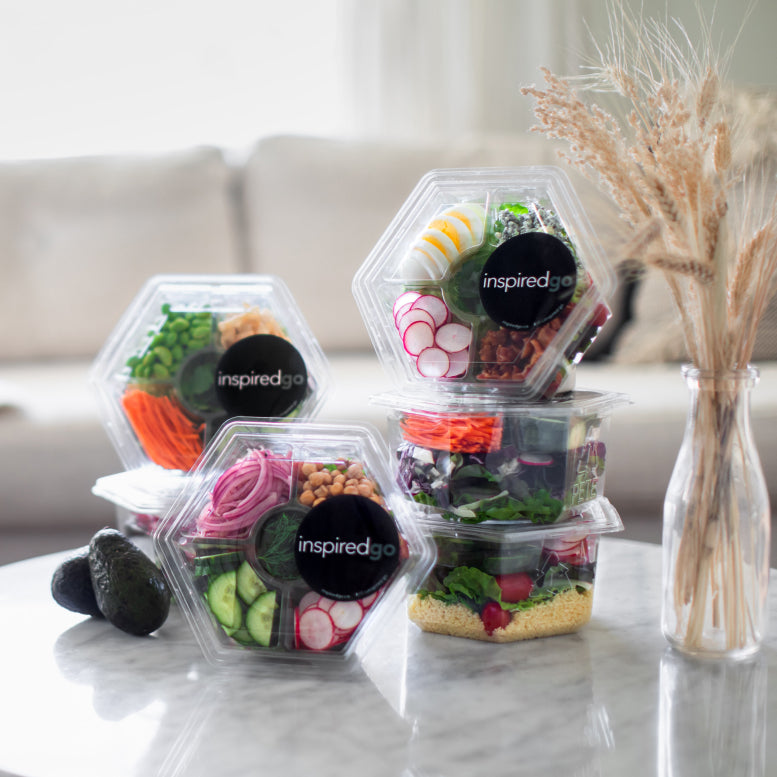What Is A Healthy Dressing For A Salad?
Table of Contents
1. Discovering Healthy Salad Dressings
2. Is a Cobb Salad Healthy?
3. How Many Calories in Chicken and Salad?
4. What Is the Most Nutritious Salad Green?
1. Discovering Healthy Salad Dressings
When it comes to enhancing the flavor of your salads without compromising their nutritional value, choosing the right dressing is crucial. A healthy salad dressing should ideally contain good fats, low sodium, and minimal added sugars, while still providing a burst of flavor to your meal. Dressings based on olive oil, for instance, are a great choice as they are rich in heart-healthy monounsaturated fats. Adding citrus juices like lemon or lime, or vinegar types such as balsamic or apple cider, can lend a tangy flavor while keeping the calorie count low. Incorporating herbs and spices like garlic, dill, or mustard can also elevate the taste without adding unhealthy elements. Remember, while premade dressings can be convenient, homemade versions allow you to control the ingredients and create a tailor-made taste. With a variety of ingredients at your disposal, you can experiment and discover your preferred healthy salad dressing that not only elevates your salads but also aligns with your dietary goals.
Order fresh salads today →


2. Is a Cobb Salad Healthy?
Cobb salads are a popular choice due to their rich flavors and balanced nutrient profile. They typically include leafy greens, grilled chicken, boiled eggs, avocado, tomatoes, cheese, and bacon, offering a mix of protein, healthy fats, and fiber. While Cobb salads are generally considered a healthy meal option, calorie counts can rise quickly depending on portion sizes and dressing choices. Opting for lighter dressings, leaner proteins, and smaller cheese or bacon portions can make Cobb salads healthier without sacrificing taste. Salad delivery services often allow customers to customize their Cobb salads, swapping or adjusting ingredients to suit their dietary needs. This flexibility ensures customers can enjoy a nutrient-rich, satisfying salad while maintaining their health and fitness goals.
Choose your salads and schedule delivery →
3. How Many Calories in Chicken and Salad?
Chicken salads are a popular meal option, combining lean protein with fresh vegetables for a balanced, satisfying dish. The calorie count in a chicken salad depends on factors like chicken preparation, dressing choice, and additional toppings. Grilled chicken typically adds fewer calories compared to fried or breaded chicken. A standard grilled chicken salad usually contains between 300–500 calories, while creamier dressings and fried chicken can push calorie counts higher. Salad delivery services provide clear nutritional information, allowing customers to make informed choices about their orders. With options to customize salads—such as choosing low-calorie dressings or extra vegetables—customers can easily tailor their meals to fit their dietary goals.
Get fresh salads and snacks delivered →
4. What Is the Most Nutritious Salad Green?
Inspired Go ensures every salad starts with the freshest and most nutritious greens, carefully selected for their health benefits and flavor profiles. Leafy greens like spinach, kale, and arugula are packed with essential vitamins, minerals, and antioxidants. Spinach provides iron and vitamin K, while kale is rich in calcium and vitamin C. Arugula, with its peppery flavor, offers folate and nitrates for improved blood flow. Inspired Go’s salads feature these greens prominently, often in creative combinations that maximize both taste and nutrition. Customers can trust that each leafy green is sourced responsibly to ensure peak freshness and nutrient density. With Inspired Go’s thoughtful ingredient curation, every bite delivers powerful health benefits, making their salads an excellent choice for those prioritizing nutrition in their meals.
Try our fresh, ready-to-eat salads →
Frequently Asked Questions
The most nutritious salad greens are dark leafy varieties like spinach, kale, and arugula. These greens are packed with essential vitamins, including A, C, and K, as well as minerals like calcium and iron. Kale is particularly rich in antioxidants, while spinach offers significant amounts of folate and magnesium. Choosing a mix of dark greens enhances both the flavor and nutritional value of your salad.
A healthy salad includes a balance of nutrient-dense ingredients like leafy greens, fresh vegetables, lean proteins, and healthy fats. For example, a base of spinach and kale, paired with grilled chicken, cherry tomatoes, avocado, and a light olive oil dressing, creates a wholesome meal. Avoid fried toppings or sugary dressings, as they add empty calories, and opt for natural ingredients to maximize nutrition.
Yes, eating salad daily is a healthy habit when it includes a variety of fresh, nutrient-rich ingredients. Salads offer fiber for digestion, antioxidants for immunity, and essential nutrients like potassium and folate. Regularly eating salads can support weight management and improve energy levels. To avoid monotony, vary your greens, proteins, and toppings to keep meals satisfying and nutritionally balanced.
Healthy salad dressings are typically made with simple, natural ingredients. Olive oil-based dressings, paired with balsamic vinegar or fresh lemon juice, provide healthy fats and enhance flavor without unnecessary calories. Avoid store-bought dressings with high sugar or preservatives. For a creamy alternative, opt for homemade dressings using Greek yogurt or avocado for added nutritional benefits.
Yes, salads are incredibly beneficial for overall health when prepared with fresh, whole ingredients. They are low in calories and high in vitamins, minerals, and antioxidants, supporting heart health, digestion, and immunity. Adding a mix of proteins and healthy fats creates a satisfying, nutrient-dense meal. Regularly incorporating salads into your diet can promote long-term well-being and energy.

